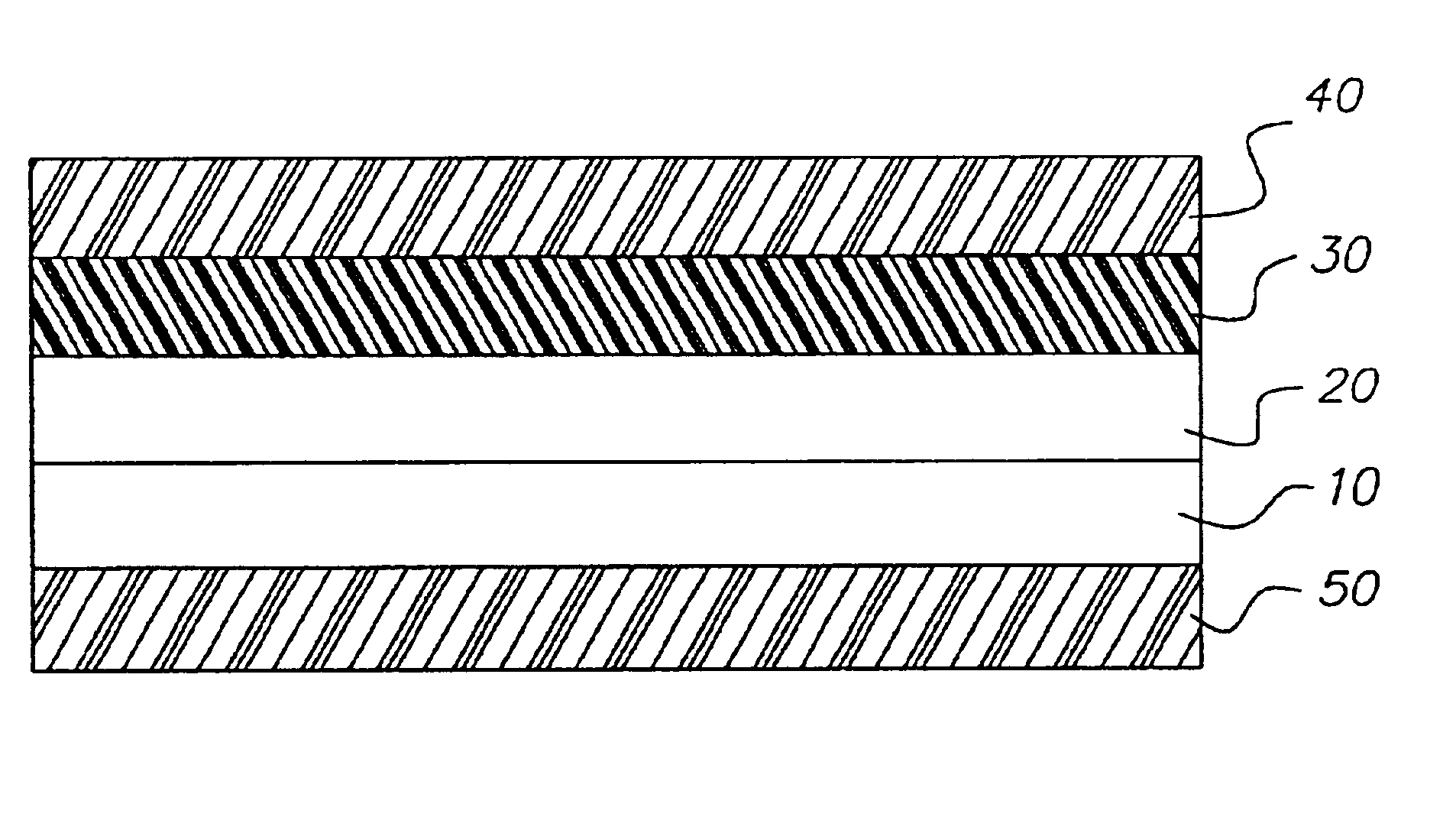Transfer laminate donor for lenticular images with anti-stick backing material
- Summary
- Abstract
- Description
- Claims
- Application Information
AI Technical Summary
Benefits of technology
Problems solved by technology
Method used
Image
Examples
example 1
Element 1 of the Invention
A 36 micron thick poly(ethylene terephthalate) support was coated with a release layer of polyvinylbutyral, (Butvar™ 76, Monsanto Co.), 1.08 g / m2, from acetone. On top of said release layer was coated a mordanting adhesive layer of an aqueous coating of 3.24 g / m2of the ammonia salt of poly{isophthalic acid-co-5-sulfoisophthalic acid (90:10 molar ratio)-diethylene glycol (100 molar ratio)}, MW=20,000 (ammonium salt of AQ29D, Eastman Chemical Co.) and 0.02 g / m2 Dispex N-40™, surfactant (Ciba Specialty Chemicals).
Element 2 of the Invention
This element was the same as Element 1 of the Invention except that between the release layer and the mordanting adhesive layer was coated a reflective layer of an aqueous coating of TiO2 (R706, Dupont Inc), 32.4 g / m2, and an aqueous coating of 3.24 g / m2 of the ammonia salt of poly{isophthalic acid-co-5-sulfoisophthalic acid (90:10 molar ratio)diethylene glycol (100 molar ratio)}, MW=20,000 (ammonium salt of AQ29D, Eastman Ch...
PUM
| Property | Measurement | Unit |
|---|---|---|
| Temperature | aaaaa | aaaaa |
| Temperature | aaaaa | aaaaa |
| Reflection | aaaaa | aaaaa |
Abstract
Description
Claims
Application Information
 Login to View More
Login to View More - R&D
- Intellectual Property
- Life Sciences
- Materials
- Tech Scout
- Unparalleled Data Quality
- Higher Quality Content
- 60% Fewer Hallucinations
Browse by: Latest US Patents, China's latest patents, Technical Efficacy Thesaurus, Application Domain, Technology Topic, Popular Technical Reports.
© 2025 PatSnap. All rights reserved.Legal|Privacy policy|Modern Slavery Act Transparency Statement|Sitemap|About US| Contact US: help@patsnap.com


